Tricopigmentation* versus Scalp Micopigmentation the FACTS as we see them
It’s true ‘life changing’ benefits can be found in both Tricopigmentation* treatments as well as traditional scalp micropigmentation yet as both industries expand many businesses are choosing to put their hard sell before the facts or allowing their clients an informed decision. In the world of aesthetics both Tricopigmentation* and scalp micropigmentation are relatively new forms of treatment with the first ever treatment being carried out by HIS HAIR in 2002. Since then the industry has been growing at a steady rate, yet seems have gained most of it growth and expansion over the last five years. The latter would appear to be as a result of the principle lead individuals within the industry turning their businesses from one to one treatment clinics to the more lucrative world of training houses.
As you read more and more about the world of Tricopigmentation* and Scalp Micropigmentation you will doubtless note that in the whole the majority of media and advertising within the industry is driven by only half a dozen key players within the market. As a whole we believe that the information that these half dozen businesses post out is very informative and lets the client know exactly what they can expect from the alternate treatment they may choose to undertake yet as more and more stand-alone businesses start to enter the market place there seems to be a considerable increase in ‘tit for tat’ misleading information about both Tricopigmentation* and scalp micropigmentation treatments. Here we hope to give some of the industry facts as we see them so you can evaluate the pros and cons for yourselves.
TECHNICIAN TRAINING
Scalp Micropigmentation:- Due to the large variety of training available for SMP it probably best to just example the world’s largest Scalp micropigmentation business and training house which is Scalp Aesthetics. Training, with equipment costs $3000 (USD), with all training being self-taught online over the internet (Although the business does offer one to one training the very vast majority of trained technicians will have qualified through the online course only). Once certification is granted then the technician is limited to practice within a small geographical area with up to 50% of client treatment costs going to the Scalp Aesthetics training house.
Tricopigmentation*:- Tricopigmentation* was invented and established by Golden Eye of Italy and only the technicians trained by them can officially use the trademark Tricopigmentation*. All training is a minimum of 10 days of one to one training, with up to 3 months post training treatment requirements prior to qualification. Training with equipment costs $11000 (USD). Once certification is granted then the technician can practice anywhere within the world with no limitations and no commissions to the training house.
TREATMENT EQUIPMENT
Scalp Micopigmentation:- Standard off the shelf tattoo guns and needles. This said however many training houses have designed and produced their own unique fine needles for better hair follicle representation. The quality of the ink insertion via the use of the tattoo gun is wholly down to the dexterity and experience of the technician.
Tricopigmentation*:- Despoke designed micropigmentation machine, hand piece, needles and ink shroud. On a whole the bespoke needles are much finer than those of scalp micropigmentation. The hand piece can be set to give an exact depth of ink each and every time to mitigate different depths of ink which can result in a differing hair follicle results. The unique ink shroud temporarily (wipes off) marks to the surface of the skin to help guide the technician to a consistency of hair follicle placement.
INKS
Scalp Micopigmentation:- With the large number of training houses, clinics and technicians involved in the scalp micropigmentation industry there are a vast amount of different inks within the sector. These vary from standard tattoo inks, semi-permanent inks and bespoke designed inks specifically for the SMP market. Many traditional tattoo inks and especially semi permanent makeup inks are made up from a variety of pigments that over time can change colour, leaving a blue, green or red tinge. The majority of bespoke inks have been designed to prevent this with some being 100% charcoal based however this tends to limit the colour tones available to the client with regards to matching their own natural hair colour.
Tricopigmentation*:- Tricopigmentation* artists are limited to the bespoke inks designed by the Goldeneye business for unique use within the tricopigmentation* treatments. The inks are keratin based to replicate the natural hair colouring as much as possible. The inks are designed never to change colour during the life of the treatment and can be matched to suit all hair colours (excluding light blonde and red hair).
DEPTH OF INK
Scalp Micopigmentation:- The principle of scalp micropigmentation is to enter the ink pigments into the dermis layer of the scalp to ensure the inks stay permanently within the skin. As the technicians on a whole use traditional tattoo guns to enter the ink into the skin then the depth the needle enters the skin is wholly dependent on the hand dexterity of the technician and consequently in many cases the ink enters the skin at various depths. The skin on the scalp is normally much thinner than that found on other areas of the body and therefore the majority of ink is generally entered into the dermis layer of the skin. The latter inks will remain permanently in the skin yet pigments that do not reach the dermis layer are not permanent which on occasion can lead to long term inconsistency of follicle placement.
Tricopigmentation*:- Tricopigmentation* inks are not designed to be permanent and as such only enter the epidermis layer of the skin. As the skin on the scalp is thin then precision equipment is required to ensure the pigments are only entered into the top layer of the Skin (epidermis ) and not lower down into the dermis layer of the skin. The bespoke micropigmentation equipment used within Tricopigmentation* is designed to ensure a consistency of needle depth enabling pigment only to be entered into the epidermis which generally results in a consistency of follicle placement and fading.
BLURING AND BLEEDING OF INKS
Scalp Micropigmentation:- The reality of any tattoo is that over time the inks the enter the dermis layer of the skin will blur and migrate. We all have that family member or friend who had bright, crisp and colourful tattoos years ago and that over time have now faded / blurred . The reality is very much the same with scalp micropigmentation. The crisp and bright hair ink follicle representations that initially look perfect and just what the client was looking for will in years to come start to look much more unnatural as the inks migrate and blur. In an attempt to counter act this reality many scalp micropigmentation clinic will advise the client to have a top up every 3-5 years to add newer more natural inks follicles back into the scalp, this can obviously result in over densification which tends never to look as natural as the initial application and in the worst instances over further years to come can result in helmet head (where pigments migrate into one another resulting in dense black areas of the skalp).
Tricopigmentation*:- The epidermis layer of the skin naturally exfoliates and replenishes itself over time and as this process takes place pigments that have entered this area of the skin will eventually disperse from the skins surface. Tricopigmentation* inks are inserted into the bottom layers of the epidermis just above the basement membrane of the skin and subsequent dermis layer. Over time as the skin replenishes itself from below then the tricopigmentation* inks start to be pushed towards the surface of the skin. This process can be exaggerated as the top layer of the skin is exfoliated. Dry skin types tend to exfoliate more that hydrated skin types and dependant on the individuals body mechanisms skin replenishments varies between individuals. Taking these factors into account it is not possible to give an exact amount of time Tricopigmentation* inks will stay in the skin yet experience tells us that on average most client inks will reach the exfoliation layer at 18 months. Clients that moisturise their scalp, do not exfoliate the skin and use shampoos with the correct PH levels can see pigments lasts up to 24-36 months (however in reality as most men don’t follow this routine the 18 months applies). What does this mean in relation to the blurring and bleeding of inks, well quite simply with their unique formula the inks don’t have time to migrate, bleed and blur and subsequently look crisp and clear through the whole process.
NEED FOR CHANGE
Scalp Micropigmentation:- The leading advantage of Scalp Micropigmentation over Tricopigmentation is that it is permanent yet some see this to be its main downfall too. As we age, although most of us want to maintain our youthful looks actually many of us also want to appear to be aging naturally (if not a little younger whilst doing so). The 20 years olds hairline we received through Scalp micropigmentation at the age of 30 may have been ‘passable’ at the time yet when we are 40/50, then how does this really make us look? As we age our desires and tastes change meaning that that sharp cut hairline we once loved we may in future want to be subtle blending curves. Clients that have had densification to fill out that receding hairline may not want to have to resort the shave hair look in years to come as all their natural hair in this area eventually falls out. Then there is the fact that 50% of the population will have grey hair by the age of 50, how will the treated dark follicle hair pigmented area of our scalps look again those ever increasing greying areas?
Permanent ink for the vast majority means just that and as such scalp micropigmentation offer clients little flexibility in the future without alternative treatment risks.
Tricopigmentation*:- As Tricopigmentation* is not permanent then it is ultimately adaptable in years to come. As we enter our 40’s and 50’s many of us become reconciled with our hair loss and become quietly confident with letting our hairline recede and thin, whereas when we were in our 20’s and 30’s this was not the case. For those in this situation then Tricopigmentation* allows them to resort to their natural hair without the application of any further hair replication or treatments in the future. For those that want to retain the more youthful yet natural look as they age into their 40’s, 50’s, 60’s etc then Tricopigmentation* easily allows for hairlines to be altered and those thinning crown areas etc to be densified as and when needed .
LASER TATTOO REMOVAL OPTIONS
Scalp Micropigmentation:- Many Scalp Micropigmentation clinics and technicians now offer laser tattoo removal as a means of tackling this issues of clients wanting change in the future, bleed/blurring and helmet head issues. Unlike traditional laser tattoo removal clinics most Scalp micropigmentation technicians are not highly experienced or highly trained in laser tattoo removal as they will only treat a handful of clients a year (you only need to carry out a 1.5hr course on line in order to pick up a laser gun). It’s true that laser tattoo removal is quite capable of removing scalp micropigmentation pigments yet more than often it is not the quick fix many will claim. There are no guarantees that laser can remove all pigments, especially given the vast amount of varying pigments in the market. Non true colour pigments can change colour when treated with a laser. If semi permanent inks have been used the pigments can be smelted by the laser and if this is the case the pigment can stay permanently under the skin and can only be surgically removed. On average if successful tattoo pigment removal will take at least a year to removal with a laser (very best removal can be expected after 3-4 treatments, yet industry averages are 11 treatments for total removal). There is a heightened risk of scaring with laser tattoo removal on the scalp due to the thinness of the skin. As well as clients not wanting scars, scars make it very difficult to remove pigment thereafter. Due to the laser treatment the scalp can blister, swell or bleed and pigment is not uniformly removed or faded often leading to an unsightly aesthetic for the periods in between the laser tattoo removal taking place. Finally for those black skin types and dark Asian skin types then laser tattoo removal is not possible due to high hypopigmentation risks and the fact that insurers will not cover the process for these skin types.
Tricopigmentation*:- Laser tattoo removal can be used on Tricopigmentation* inks yet as the treatment is not permanent there is no real reason for laser tattoo removal and the incumbent risks.
TREATMENT COSTS
Scalp Micropigmentation:- Costs take into consideration the average anticipated life requirement for the treatement being 21 year. From information currently available the average costs found for Scalp micropigmentation are £2000 to £3000 (plus Vat) for a Norwood 6 hairline. If we take the lowest price initial treatment costs and add the worst case scinaorio of a top-up being required every 3 years we have calculated the below figure.
Treatment for a Norwood scale 6 client:-
Scalp Micro pigmentation (hair tattoo) £2000 intial treatment, £1000 per 3 year top-up (x7)= 21 year of treatments
Scalp Micropigmanention life time costs total £9000**
**Does not account for laser tattoo removal costs, inflation or Vat
Tricopigmentation*:- Costs take into consideration the average anticipated life requirement for the treatment being 21 year. From costs obtain from Redeem Clinic then a Norwood 6 hairline Tricopigmentation* treatment would be £1250. If we take the price of the initial treatment costs and add top-up schedule advised by the company as a worse-case scenario then we have calculated the below figures.
Tricopigmentation* £1250 initial treatment, 6 month top-up (if required) £249, 12 month top-up £425, Each following year £212 (x 20) = 21 year of treatments
Tricopigmentation* life time cost total £6164**
**Does not account for inflation
So there we have it the differences between each treatment as we see them. Its apparent to us that there seems to be leading advantages of Tricopigmentation* over and above scalp micropigmentation, yet we’re realists when it comes to appreciating everyone is different and have their own desires and requirements. The above may appear biased as Redeem Clinic offer Tricopigmentation* (don’t forget we also offer SMP too) yet genuinely this blog is simply trying to dispel the myths from both sides with regards to the pro’s and con’s of both treatments and consequently we hope you find it helpful.
*Results may vary from person to person
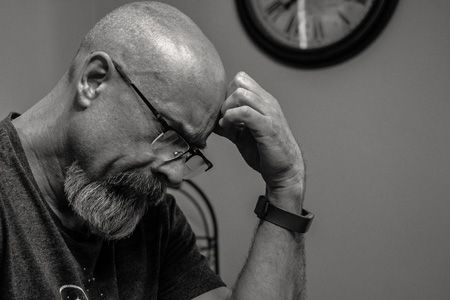



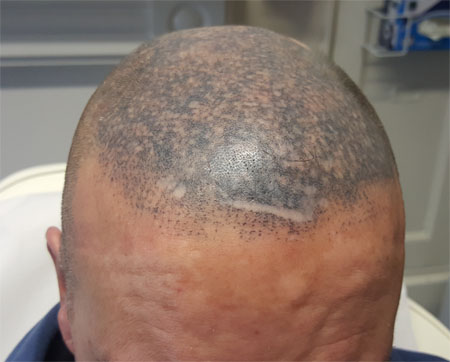









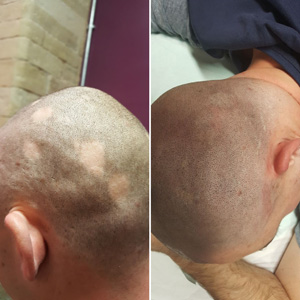



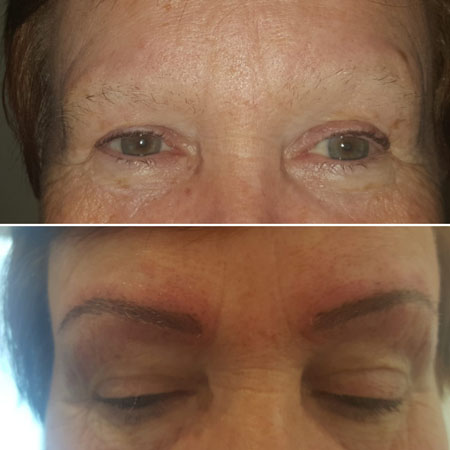



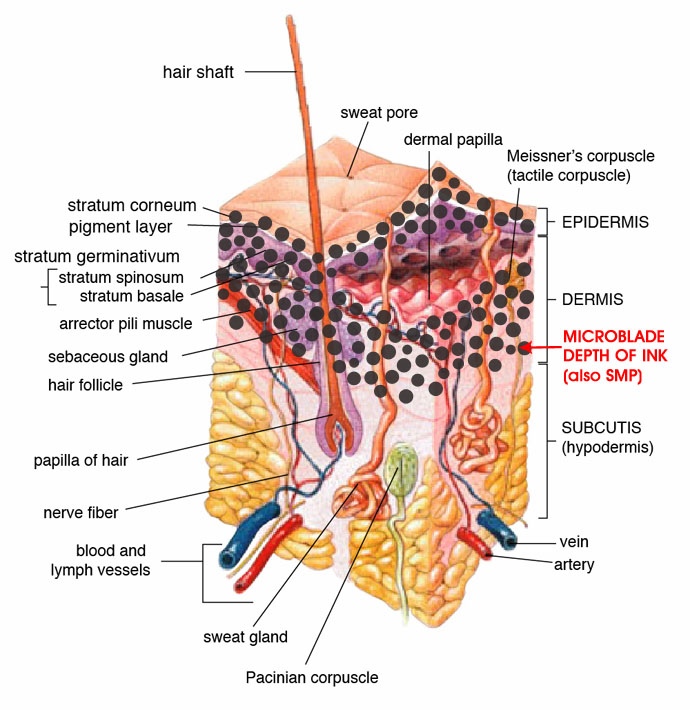

 *Microbladed brows after two years showing red shadow (around natural brows)
*Microbladed brows after two years showing red shadow (around natural brows)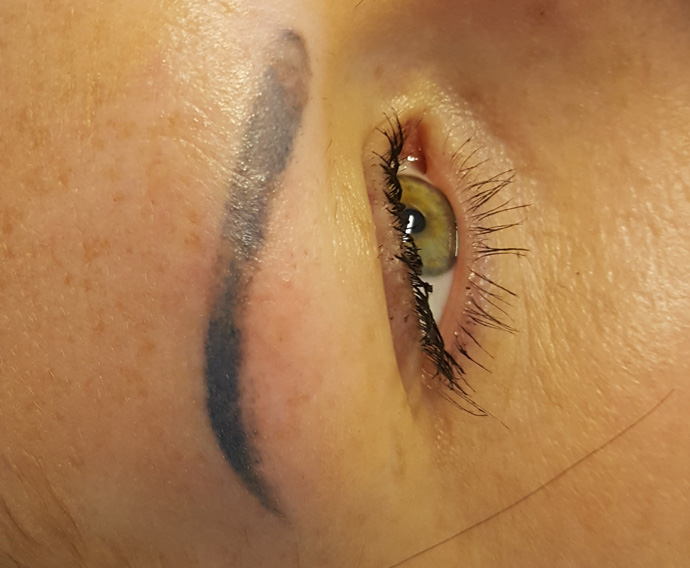



 *
* *
* *
*

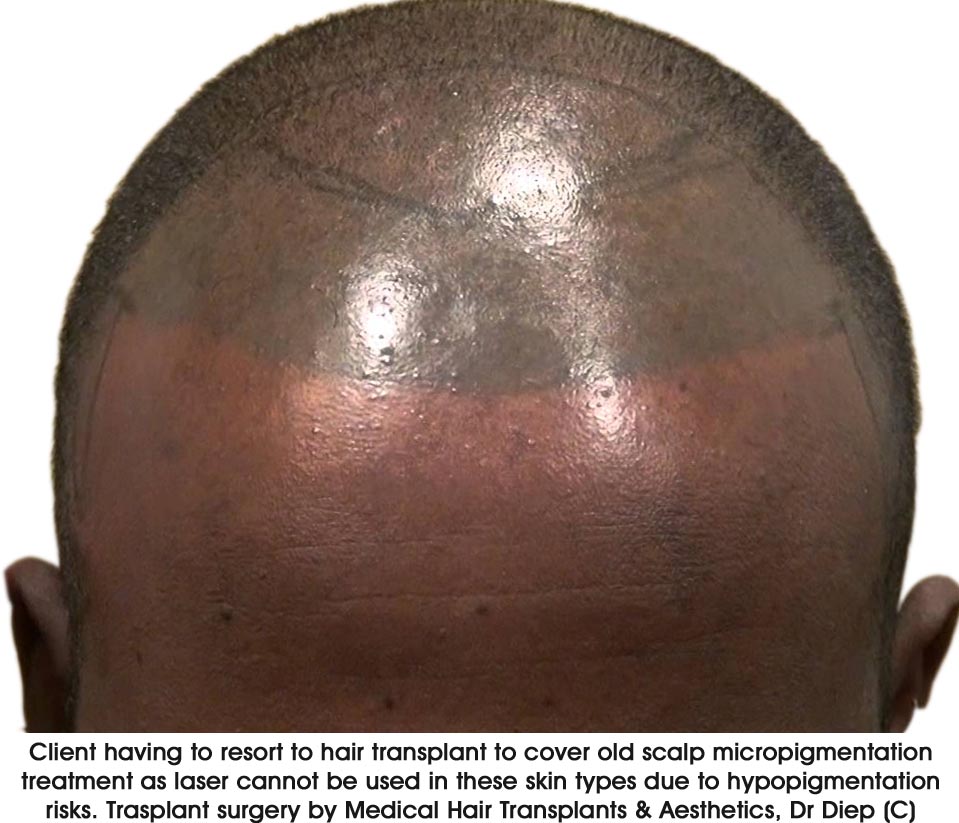 *
* *
*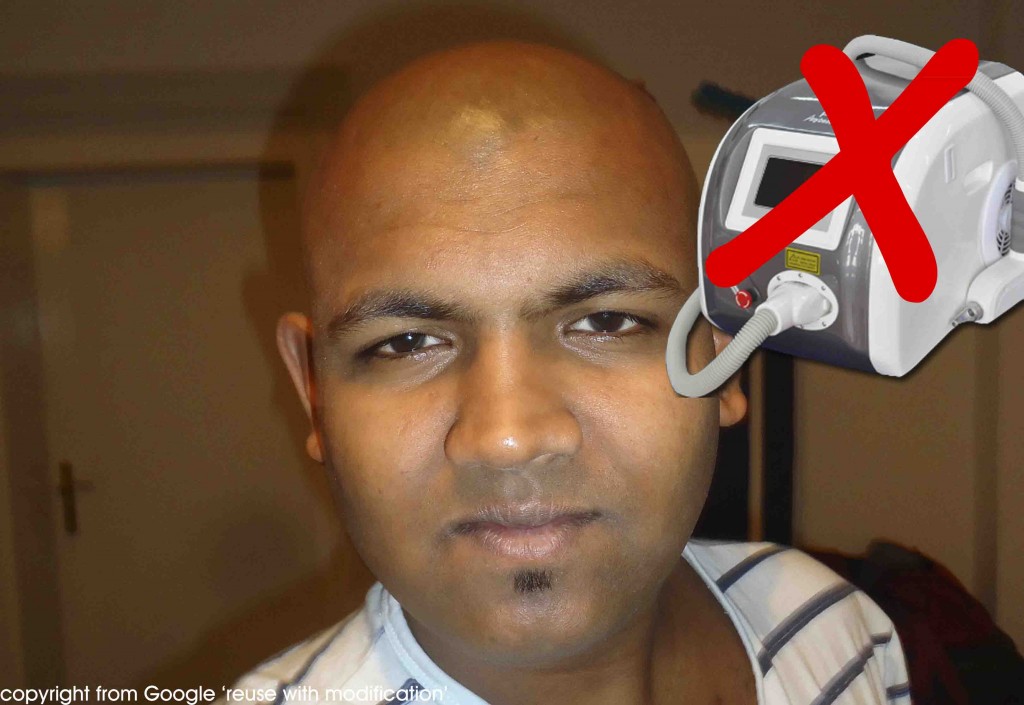
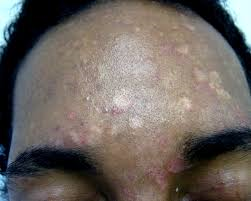 *
*